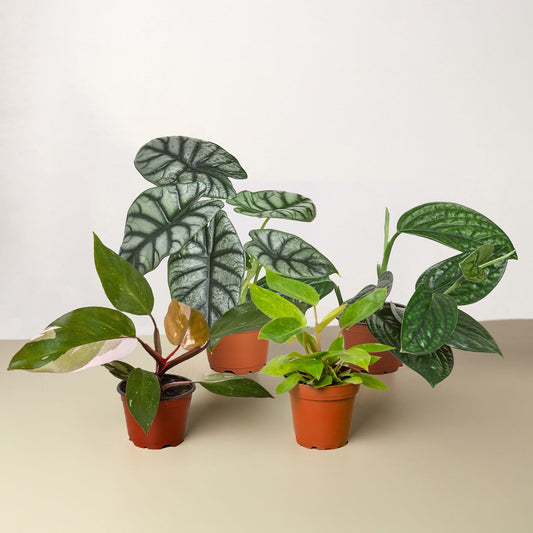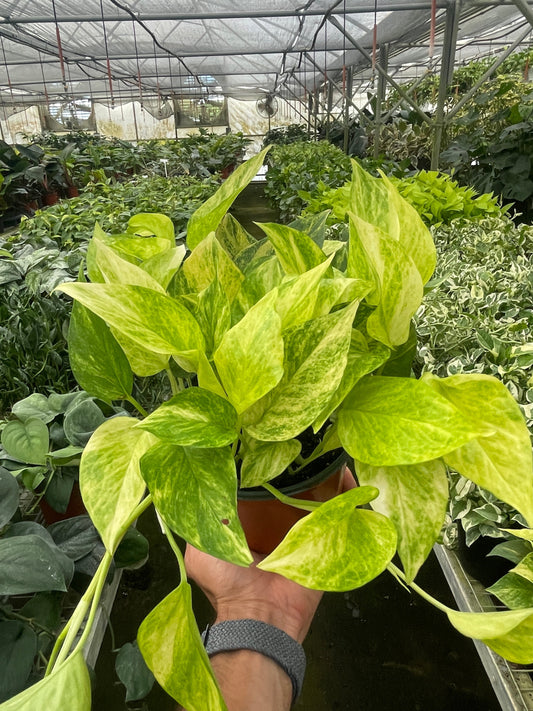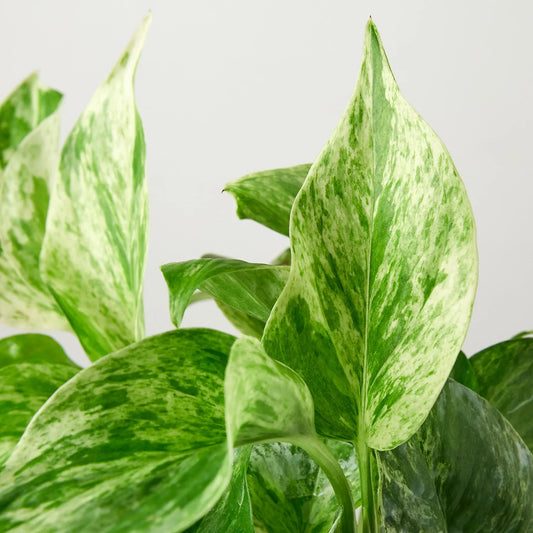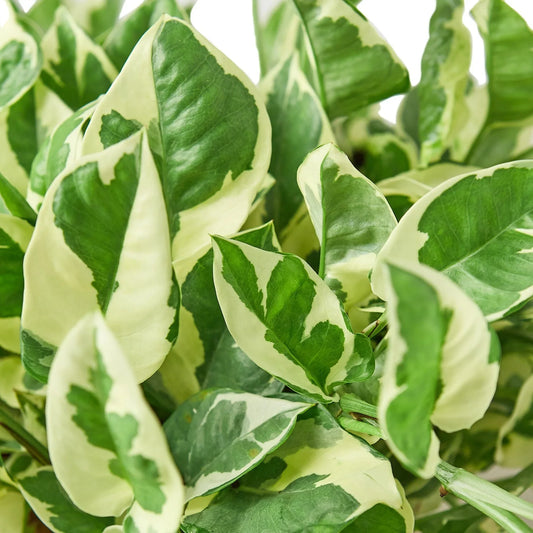Common Dendrobium Orchid Pests (And What To Do About Them)
Cafe Planta Team
Growing dendrobium orchids can be a rewarding journey, filled with vibrant blooms and a touch of exotic elegance. But, as with any journey, there are inevitable bumps along the way. For orchid lovers, those bumps often come in the form of tiny, sneaky pests. These unwelcome guests can turn your flourishing oasis into a battle zone if not handled promptly.
In this post, we'll tackle some of the most common pests that target dendrobium orchids and, more importantly, how you can show them the door. From recognizing the first signs of trouble to adopting preventive measures, we've got you covered. Ready to arm yourself with some pest-fighting knowledge?
Spider Mites: The Tiny Terrors
Spider mites are one of those pests that, despite their minuscule size, can cause big headaches. These tiny arachnids are notorious for their ability to multiply rapidly, and before you know it, your orchid's leaves might be looking a bit worse for wear.
Spotting the Culprits: Spider mites are tricky because they're so small. But their damage is more visible—look for tiny yellow or brown spots on leaves, often accompanied by delicate webbing. You might also notice a dusty appearance on the leaves if the infestation is severe.
What to Do: If you suspect spider mites, it's time for action. Here's a step-by-step approach:
- Isolation: Move your affected orchid away from other plants to prevent the mites from spreading.
- Shower Time: Rinse the plant under a gentle stream of water to dislodge mites. Make sure to reach the undersides of the leaves where they like to hide.
- Neem Oil: Mix a solution of neem oil and water, and spray it on your orchid. Neem oil is a natural pesticide that's effective against mites.
- Regular Checks: Keep an eye on the plant. Repeat the treatment weekly until you're sure the mites are gone.
Remember, spider mites thrive in dry conditions, so maintaining a bit of humidity can keep them at bay. A humidifier might just be your orchid's best friend during dry spells.
Aphids: The Sap-Sucking Sappers
Aphids are like the vampires of the plant world, sucking the sap right out of your precious orchids. These pests can be especially problematic because they reproduce quickly, leading to a full-blown infestation before you know it.
Recognizing Aphids: Aphids are small, pear-shaped insects that can be green, black, or even pink. They tend to cluster on new growth and flower spikes, leaving behind a sticky residue known as honeydew.
Handling an Infestation: Here's how you can get rid of these sap-suckers:
- Manual Removal: For light infestations, you can often remove aphids by hand or with a gentle spray of water.
- Insecticidal Soap: Use a commercial insecticidal soap or make your own by mixing a few drops of dish soap in water. Spray the solution on affected areas.
- Encourage Predators: Ladybugs and lacewings are natural aphid predators. Introducing them to your garden can help keep aphid populations in check.
Keeping your plants healthy and stress-free is key to preventing aphid problems. Aphids tend to target weaker plants, so regular care and maintenance can go a long way in keeping these pests away.
Mealybugs: The Cottony Menace
Mealybugs are the houseguest nobody invited. These pests are easy to recognize by their cotton-like appearance, often found in the nooks and crannies of your orchids.
Identifying Mealybugs: Look for white, waxy clusters on leaves, stems, and roots. They can also produce honeydew, which can lead to sooty mold if left unchecked.
Eliminating Mealybugs: Taking care of mealybugs requires persistence. Here's how to tackle them:
- Alcohol Swabs: Dip a cotton swab in rubbing alcohol and dab it on the mealybugs. The alcohol dissolves their protective coating, effectively killing them.
- Neem Oil Spray: Similar to spider mites, a neem oil solution can work wonders against mealybugs.
- Systemic Insecticides: For severe infestations, consider using a systemic insecticide that targets the mealybugs from within the plant.
Regular inspections are crucial. Mealybugs are sneaky and tend to hide in crevices, so be thorough in your checks.
Scale Insects: The Armored Invaders
Scale insects are a bit like tiny armored tanks—they latch onto your plants and don't let go easily. These pests can be quite destructive if not caught early.
Spotting Scale: Scales appear as small, flat, or slightly domed bumps on stems and leaves. They can be brown, gray, or black, depending on the species.
Getting Rid of Scale: Here's how to tackle these stubborn pests:
- Manual Removal: Use a soft toothbrush or cotton swab dipped in alcohol to gently scrub off the scales.
- Neem Oil or Horticultural Oil: These oils suffocate the scales, making them an effective treatment option.
- Insecticidal Soap: As with other pests, insecticidal soap can help control scale insects.
Preventing scale infestations involves regular cleaning and monitoring. Make sure your orchids have good airflow, as stagnant conditions can promote pest problems.
Thrips: The Flower Destroyers
Thrips are tiny, slender insects that can wreak havoc on your orchid blooms. They feed on the plant's tissues, causing discoloration and deformities.
Identifying Thrips: Look for silvery streaks, spots, or patches on leaves and flowers. Damaged flowers may appear distorted or have a mottled appearance.
Taking Action Against Thrips: Follow these steps to manage thrips:
- Isolation: Move affected plants away from others to prevent the thrips from spreading.
- Blue or Yellow Sticky Traps: Place these around your orchids to catch adult thrips.
- Insecticidal Soap or Neem Oil: Spray affected plants with these solutions to reduce thrip populations.
Thrips tend to prefer dry conditions, so maintaining humidity can help deter them. Plus, healthy plants are less attractive targets for these pests.
Slugs and Snails: The Nighttime Nibblers
Slugs and snails might seem more at home in your garden than on your orchids, but they can occasionally make their way indoors, especially if you like to keep your orchids outside during warmer months.
Spotting These Pests: Look for silvery slime trails and irregular holes in leaves and flowers. They tend to feed at night, so you may not see them during the day.
Controlling Slugs and Snails: Here's how to keep these munchers at bay:
- Hand-Picking: Go on a slug and snail hunt at night with a flashlight and remove them manually.
- Bait and Traps: Use commercially available slug and snail baits, or try homemade traps like a shallow dish of beer to attract and drown them.
- Barrier Methods: Copper tape around pots can deter slugs and snails due to a mild electrical charge they experience upon contact.
Regular monitoring and quick removal are key to keeping slugs and snails from becoming a bigger problem.
Fungus Gnats: The Annoying Buzzers
Fungus gnats aren't specifically harmful to the orchids themselves, but they can be a nuisance and cause problems if left unchecked. They thrive in moist environments, which can sometimes lead to root rot if the conditions are right.
Recognizing Fungus Gnats: You'll often see these small, black flies hovering around your orchids or the soil surface. Their larvae can damage roots if populations get too high.
Managing Fungus Gnats: Try these techniques to reduce their numbers:
- Reduce Moisture: Allow the top layer of potting medium to dry out between waterings to disrupt their breeding cycle.
- Sticky Traps: Yellow sticky traps can capture adult gnats and help you monitor the population.
- Hydrogen Peroxide Solution: Watering with a diluted hydrogen peroxide solution can kill larvae in the soil.
Balancing moisture levels is crucial in preventing fungus gnats, along with regular checks and sanitation.
Preventive Measures: Keeping Pests Away
While dealing with pests is part of the plant parenting journey, there are a few strategies you can adopt to keep them from becoming frequent visitors. Prevention is always better than cure, after all!
Regular Inspection: Make a habit of checking your orchids frequently for signs of pests. Early detection can make all the difference.
Maintain Cleanliness: Keep the area around your orchids clean and free of debris, which can harbor pests. Prune away any dead or decaying material promptly.
Quarantine New Plants: When bringing new orchids into your home, keep them separate from your existing plants for a few weeks to ensure they aren't carrying any hitchhikers.
Healthy Plants, Fewer Problems: Healthy orchids are less susceptible to pest infestations. Provide proper light, water, and nutrients to keep your plants in top form.
By staying vigilant and proactive, you can minimize the chances of pests taking over your beautiful dendrobium orchids.
Final Thoughts
Dealing with pests on your dendrobium orchids can be challenging, but with a little know-how, you can protect your plants and enjoy their beauty. From spider mites to slugs, each pest has its quirks and solutions. Remember, the key is early detection and consistent care.
At Cafe Planta, we're all about helping you nurture your plant collection. Whether you're looking for new additions or need advice on plant care, we're here for you. Feel free to reach out via email or on Instagram. Let's connect and grow together, one plant at a time!



















